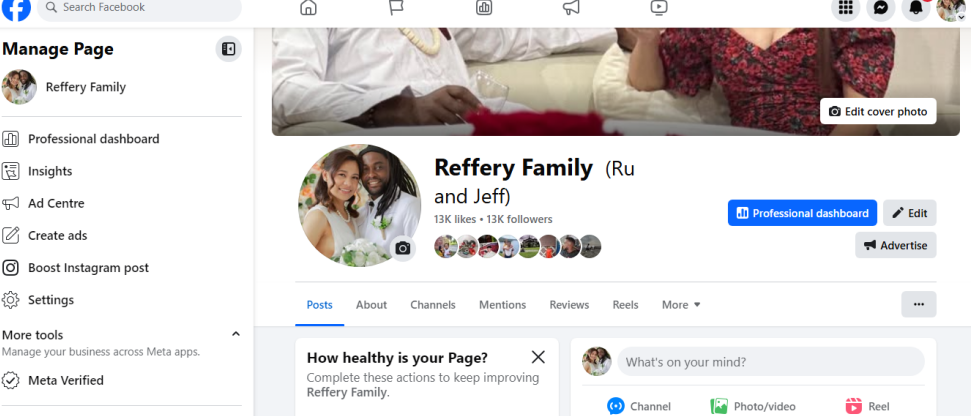Have you ever sat in front of a blank screen, struggling to organize your thoughts into a compelling blog post? I’ve been there too! Whether you’re writing to drive traffic to an affiliate link, promote an e-commerce store, or engage your audience on Facebook and YouTube, structuring your content with a solid outline is key to success.
Through my journey in affiliate marketing, running an online shop, and helping others grow their businesses with engaging blog posts, I’ve learned the power of a well-structured outline. In this guide, I’ll show you how to craft an effective blog post outline that keeps your content engaging, SEO-friendly, and conversion-driven.
Headlines are much more than just a string of words at the top of a page. They’re like the first handshake in a business meeting or the cover of a book that draws you in. A killer headline is what grabs someone by the eyeballs and gets them to keep reading. It’s your first impression, and we all know how important those are.
Imagine scrolling through social media or browsing a website. Hardly anything’s going to make you stop other than a headline that pops. Honestly, it’s your best shot at cutting through the noise of the internet. In my time running e-commerce, crafting lively headlines was like waving a flag to get noticed. That headline can lure in potential customers or readers like it’s got a magnetic pull.
Over on our Facebook page, Reffery Family, and across YouTube, I’ve seen firsthand what a well-crafted headline can do. When we nailed that catchy headline, engagement rates spiked, like watching your favorite video go viral. People didn’t just scroll on by; they stopped, clicked, and read. That’s power you don’t want to underestimate.

Effective headlines aren’t just about snappy words. They tap into what makes folks tick, tugging at curiosity, emotions, or even urgency. On the Reffery Family pages, we’ve played around with different styles, and every time we nailed it, we saw tangible boosts in interest and interaction. Honestly, these aren’t just words—they’re your secret sauce to getting noticed in a jam-packed world.
Define Your Blog’s Purpose
Before you start writing, ask yourself: What do I want to achieve with this blog post?
Your purpose could be:
- Driving traffic to an affiliate product.
- Promoting an e-commerce item.
- Educating and engaging readers.
- Helping business owners improve their strategies.
Example from My Experience:
When I wrote a Facebook post about my experience using a digital marketing tool, my goal was clear: generate interest and lead readers to my affiliate link. Because I structured my post well, I saw higher engagement and more clicks.
Identify Your Target Audience
- Understanding who you’re writing for shapes your content structure and tone. Are your readers beginners, experienced marketers, or entrepreneurs?
- Once you know your purpose and audience, research trending topics. Use Google, social media, and forums to find common questions people ask. (trends.google.com), Jaaxy, (producthunt.com), (news.google.com)
- AI tools like ChatGPT can help generate ideas and content suggestions. I’ve used AI to brainstorm blog post topics that resonate with my Facebook followers!
- A blog outline ensures a logical flow and makes writing easier. Here’s an example outline for an affiliate marketing post:

Title: “How I Made My First $500 in Affiliate Marketing with Zero Experience”
- Personal story of starting affiliate marketing.
- The importance of choosing the right niche.
Your introduction should hook the reader within seconds. Use a question, statistic, or personal story.
Example:
“Imagine waking up to an extra $100 in your account—all from a simple blog post you wrote last week. That’s the power of affiliate marketing. But how do you create a blog post that actually converts? Let’s dive in.”
Crafting Headlines that Convert: Strategies for Success
Jumping into the art of headline writing, you quickly learn it’s not just scribbling catchy phrases. It’s more like laying out a roadmap to end up on a winner. A successful headline needs purpose and punch, ensuring it’s the gateway to something valuable for the reader.
One trick that always seems to hit the mark is injecting curiosity. Think about all those times you’ve clicked on an article because you just had to know more. Crafting a headline that’s intriguing yet gives a hint of what’s to come can pull readers in like nothing else.

Knowing your audience is half the battle. Tailoring your headlines to who you’re talking to makes all the difference. A bit of personalization can go a long way. Phrases or words that resonate with your crowd can be a game-changer. Like on realsmartprofits.com, shaping headlines to match reader interests not only roped them in but also guided traffic to those juicy affiliate links.
Visualizing headlines as an advertisement isn’t far off the mark. The headline pitches the first sale—you convince with just a glance. It’s not about hard selling, but more about making the reader connect and click. Over time, I’ve learned that dissecting what works—like examining which headlines brought more eyes to our e-commerce product pages—teaches you a lot. It’s like keeping a playbook filled with what scores big.
Real-life case studies keep you grounded. Like when a headline tweak turned the page views around on realsmartprofits.com. It was all down to hitting the right tone for the audience. These moments become your teaching points, showing how every word can tilt the results in a good way.
Personalizing Headlines for Different Niches: Versatility is Key
When it comes to writing headlines, one size definitely doesn’t fit all. What works for a tech blog might flop on a lifestyle site, and the same goes for different platforms like Facebook and YouTube. You gotta know your niche and adapt, like shifting gears on a road trip.
Selling an e-commerce product calls for headlines that spotlight benefits and features, making the product irresistible at first glance. But if you’re engaging followers on social media, it’s about connecting with them personally. A headline that feels like a conversation starter works wonders there. Over on Reffery Family’s social channels, I found that relatable and informal headlines grabbed attention and sparked interaction.

Each platform has its own vibe. For example, YouTube thrives on excitement and intrigue. Crafting headlines that promised either an interesting story or a crucial tip kept our followers coming back for more, eager to click on each new release. Facebook, on the other hand, demanded headlines that were more engaging and personable. It’s like talking to your friends—keep it casual but intriguing.
My own experiences with adapting these strategies highlighted another crucial element—localizing content. Headlines that adapted to cultural nuances or even used a bit of slang saw much higher engagement. It’s about making the headline feel like it knows its reader inside and out. This not only boosts your reach but forges a stronger connection with your audience, tailoring the message to hit home every time.
The Role of Keywords: Balancing SEO and People-First Content
Let’s talk about keywords—your backbone for search engine optimization and crafting headlines that draw in the right crowd. Keywords can feel like a tightrope act. You want to use them smartly without turning your headline into a string of robotic phrases.
The trick is to pick out low-competition, high-relevance keywords that naturally fit into your headlines. Think of these as the secret sauce to making your content discoverable. But always keep it conversational and clear. On realsmartprofits.com, I found that integrating these keywords subtly without losing the headline’s hook made all the difference in bringing traffic my way.
Headlines don’t have to suffer for SEO. They can be creative and optimized if keywords are woven in seamlessly. The key lies in balance—crafting a headline that catches the eye and plays nice with search algorithms. It’s like mixing style with substance.

Using real-world examples can offer a roadmap to success. On my site, when different combinations of keywords in the headlines were tried, there was more visibility and reader engagement. This approach heightens both site performance and reading experience, striking a chord with the human audience while staying on the search engine radar.
Testing and Refining: Continuous Improvement for Maximum Impact
Crafting a great headline isn’t a one-and-done deal. It’s an ongoing process of testing, getting feedback, and refining your approach to see what truly works. Analyzing what captures attention and what falls flat can be eye-opening.
A proactive way to approach this is A/B testing. Try out different versions of a headline to see which resonates more with your audience. It’s like running a friendly competition to see which approach wins more clicks or engagements. And trust me, the results can surprise you!
On Reffery Family’s platforms, checking analytics regularly helped in identifying trends in headline effectiveness. It’s more about observing patterns than just numbers, understanding which words create buzz and which don’t connect as expected.

Feedback is invaluable. Whether it’s comments, shares, or likes, these indicators tell you what works. They guide adjustments and tweak strategies, bringing your headline game up a notch.
Real success stories from the Reffery Family experience are a testament to effective headline transformation. By tweaking words based on insights, not only did engagement soar, but consumer attraction followed suit. In the end, what counts is connecting with your audience, and a killer headline is your best friend in making that connection happen.
Outlining your blog post before writing makes the process easier, keeps your content engaging, and improves SEO. Whether you’re doing affiliate marketing, blogging for business, or running an e-commerce store, structuring your content can lead to better conversions.
Start implementing this method today, and watch your blog posts gain more traction! Need more tips? Follow my website, Realsmartprofits.com, for more blogging and affiliate marketing strategies!

I love how you break down the process into simple, actionable steps—it makes the daunting task of headline creation feel a bit more like fun than work. I’m curious though: do you think the same approach works for every niche, or do some topics require a different twist? Thanks for sharing your insights!
“I’m so glad you found the breakdown helpful! You’re right, while the basic approach works across most niches, some topics (like health, finance, or entertainment) might benefit from a more emotional or curiosity-driven angle. The key is knowing your audience and what grabs their attention. Thanks for your thoughtful comment!”
Hello Jeff!
This was such a helpful breakdown of writing compelling headlines! It’s amazing how much impact a strong title has on whether someone actually clicks to read a post. I’ve definitely struggled with finding the right balance between engaging and not sounding too clickbaity. The tips on using curiosity and power words really stood out to me—I feel like that’s an area I could improve in.
Do you have a go-to formula or favorite type of headline that tends to perform best? I’d love to hear what’s worked for you!
Angela M 🙂
Hello Angela!
Thank you so much for your kind words! I’m really glad you found the breakdown helpful—headlines truly make all the difference when it comes to grabbing attention. Finding that sweet spot between engaging and not overly clickbaity is definitely a challenge, but once you get the hang of it, it becomes much easier!
As for a go-to formula, I’ve found that these three types of headlines tend to perform really well:
The Curiosity Hook “You Won’t Believe What Happens When You Try This Strategy” (sparks intrigue).
The Listicle Approach “7 Powerful Headline Formulas That Work Every Time” (structured & scannable).
The Problem-Solution Format “Struggling to Write Headlines? Here’s a Simple Trick That Works” (addresses a pain point).
A good rule of thumb is to include power words, numbers, or a sense of urgency when appropriate. Also, I always test different variations to see what resonates most with my audience!
Do you have a specific niche or type of content you write headlines for? I’d love to hear what’s been working for you!